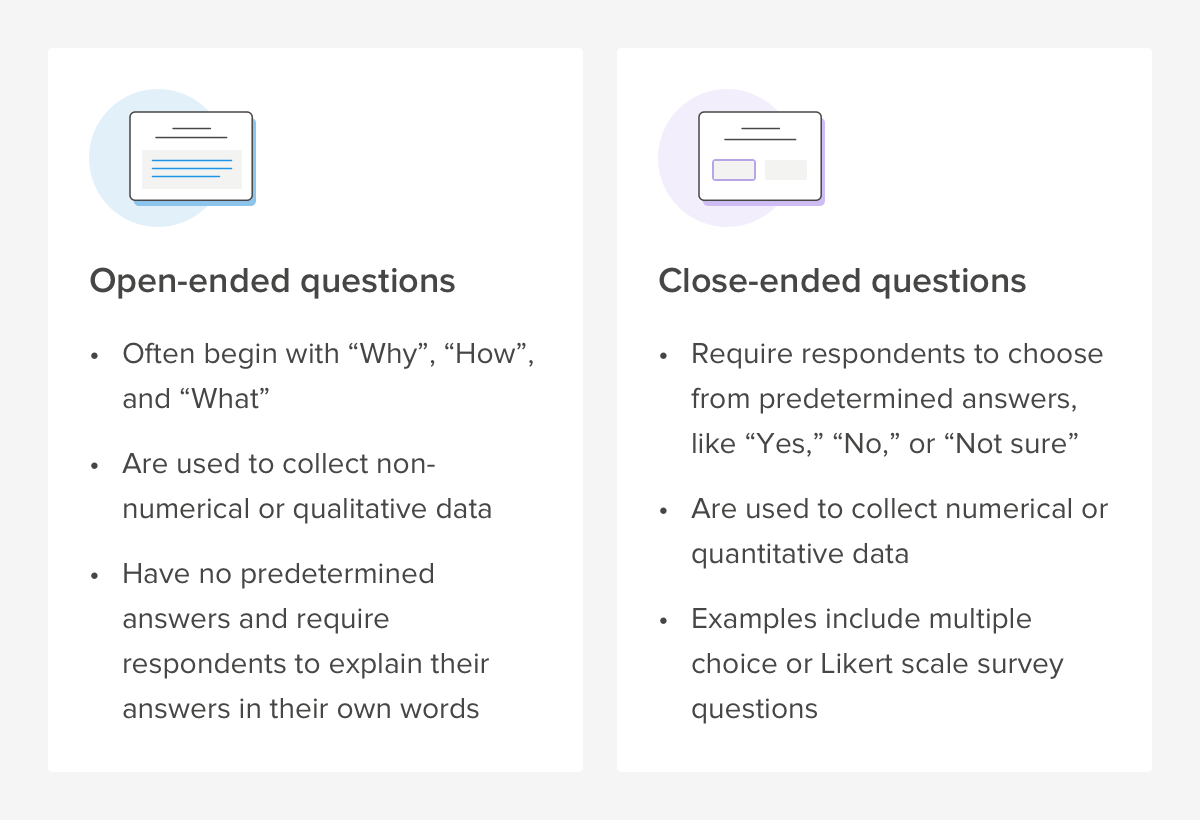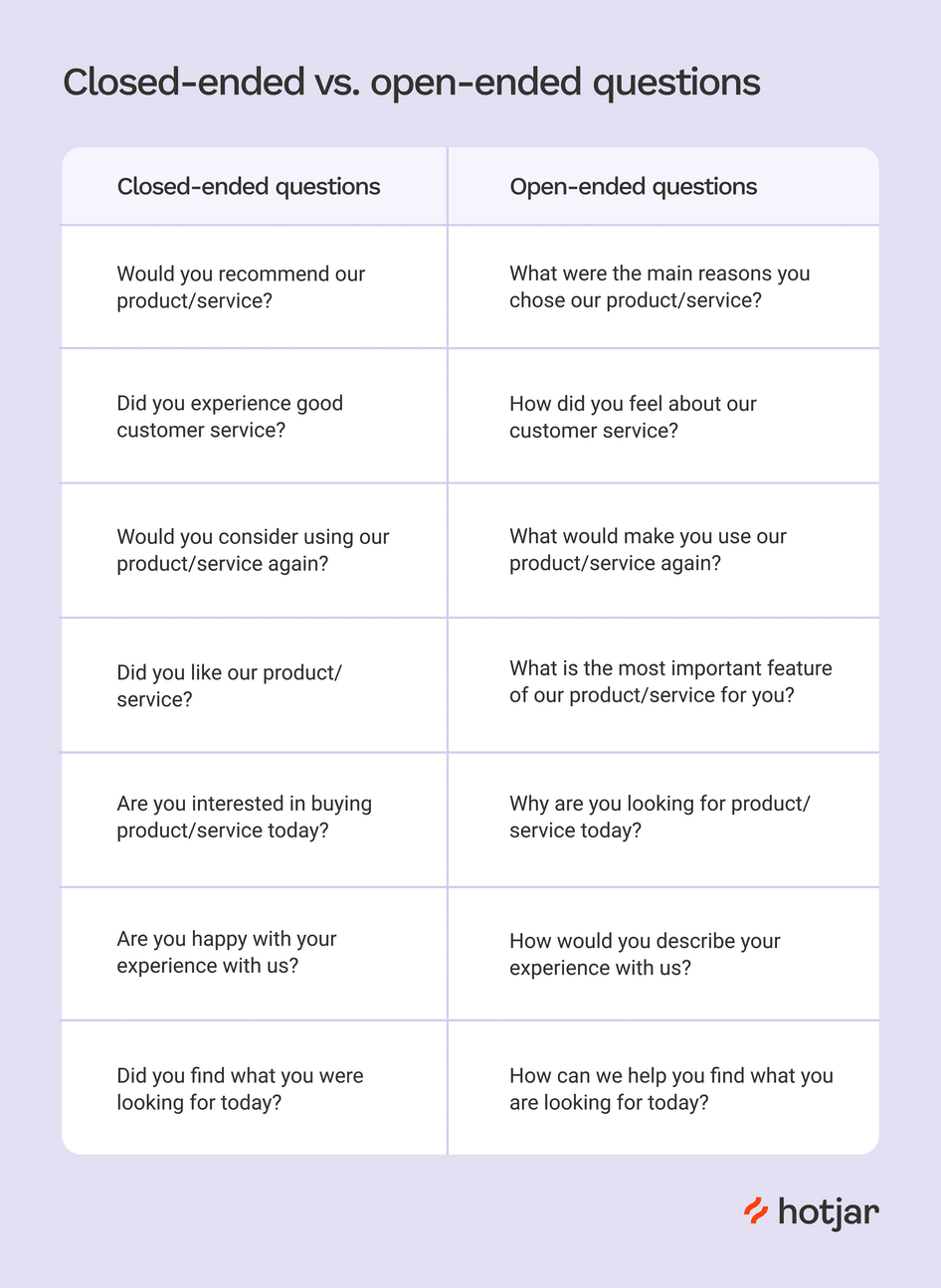Closed ended questions are vital tools in communication. They lead to clear, direct answers.
In many settings, from business to education, closed ended questions help gather specific information efficiently. They can simplify decision-making and provide quick insights. But, to use them effectively, you need to know the different types and how to apply them.
This blog post will explore various closed ended questions, provide practical examples, and share best practices. By understanding these elements, you can enhance your questioning techniques, making interactions more productive and focused. Dive in to discover how to utilize closed ended questions to their fullest potential!

Introduction To Closed Ended Questions
Closed ended questions are a powerful tool in communication. They require a simple, direct answer, usually “yes” or “no.” These questions can help gather specific information quickly. They are useful in various settings, such as surveys, interviews, and classrooms.
Importance In Communication
Closed ended questions are essential for effective communication. They help to control the conversation’s direction and gather precise data. For instance, in customer feedback surveys, these questions can provide clear insights. This can lead to better decision-making.
Additionally, closed ended questions reduce the chance of misunderstandings. They require concise answers, leaving little room for ambiguity. This clarity can enhance mutual understanding in both personal and professional interactions.
Brief History
The concept of closed ended questions has been around for centuries. Ancient philosophers used them to provoke thought and discussion. Over time, their use evolved in various fields.
In the 20th century, closed ended questions became popular in social science research. Researchers realized their potential for collecting quantitative data. Today, they are a staple in surveys, interviews, and many other applications.
Types Of Closed Ended Questions
Closed ended questions are a powerful tool in surveys and interviews. They offer predefined responses, making data analysis easier. These questions help gather specific, actionable insights. Let’s explore the types of closed ended questions.
Multiple Choice
Multiple choice questions provide several answer options. Respondents select the one that best fits their opinion. These questions are ideal for surveys needing detailed feedback. For example, “What is your favorite fruit?” followed by a list of fruits. This format helps gather clear, comparable data. It also reduces ambiguity in responses.
Yes/No questions are straightforward. Respondents choose either “Yes” or “No”. These questions are useful for quick, binary feedback. An example is, “Do you like ice cream?” This type is easy to answer and analyze. It provides direct insights into preferences and behaviors.
Multiple Choice Questions
Multiple Choice Questions (MCQs) are a popular form of closed-ended questions. They provide respondents with a set list of answers to choose from. MCQs are useful in various scenarios, such as surveys, quizzes, and standardized tests. This type of question can help in gathering specific data effectively.
Advantages
Multiple Choice Questions offer several advantages:
- Easy to analyze: Responses can be quickly tallied and analyzed.
- Time-efficient: Respondents can answer questions faster.
- Reduced ambiguity: Clear options reduce misunderstandings.
- Versatile: Can be used in various fields and subjects.
Examples
Here are some examples of Multiple Choice Questions:
| Question | Options |
|---|---|
| What is the capital of France? |
|
| Which of the following is a prime number? |
|
| What is the largest planet in our solar system? |
|
MCQs are a reliable way to collect specific information. They are simple for respondents and straightforward for data analysis. Using clear and concise options ensures better results and higher response rates.
Yes/no Questions
Yes/No questions are a type of closed-ended question. They require a simple “yes” or “no” answer. These questions are useful for quickly gathering specific information. They help in making decisions and confirming details.
Advantages
Yes/No questions offer several advantages:
- Simplicity: Easy to understand and answer.
- Efficiency: Quick to respond to, saving time.
- Clarity: Provides clear, straightforward responses.
- Focus: Keeps the conversation on track.
These advantages make Yes/No questions ideal for surveys, interviews, and everyday conversations.
Examples
Here are some common examples of Yes/No questions:
- Do you like coffee?
- Have you ever traveled abroad?
- Is it raining outside?
- Did you finish your homework?
- Are you feeling better today?
Yes/No questions can be used in various contexts. For instance, in a business setting, they might look like this:
| Question | Purpose |
|---|---|
| Did you complete the report? | Check task completion |
| Is the project on schedule? | Monitor progress |
| Do you agree with the proposal? | Gather opinions |
Yes/No questions are powerful tools for gathering clear and concise information. They help in making quick decisions and confirming facts.
Likert Scale Questions
Likert Scale Questions are a popular type of closed-ended question. They measure attitudes, opinions, or behaviors. Respondents choose from a range of options. These options usually reflect a level of agreement or disagreement. This format helps in gathering quantitative data in surveys.
Usage
Likert Scale Questions are used in various fields. They help in understanding customer satisfaction, employee feedback, and market research. These questions provide a simple way to measure complex subjects. Their structured format ensures easy analysis of data.
Using Likert Scale Questions can improve survey response rates. Respondents find them easy to answer. They don’t require much thought. This simplicity leads to quick and accurate responses.
Examples
Below are some examples of Likert Scale Questions:
- Customer Satisfaction: How satisfied are you with our service?
- Very Satisfied
- Satisfied
- Neutral
- Unsatisfied
- Very Unsatisfied
- Employee Feedback: How do you rate your work-life balance?
- Excellent
- Good
- Average
- Poor
- Very Poor
- Market Research: How likely are you to recommend our product?
- Very Likely
- Likely
- Neutral
- Unlikely
- Very Unlikely
These examples show how Likert Scale Questions can be used in different contexts. They help in gathering clear and concise feedback.
Rating Scale Questions
Rating scale questions are a type of closed-ended question. They allow respondents to express their opinions or feelings about a specific topic in a measurable way. These questions typically use a scale, such as 1 to 5 or 1 to 10, to gauge the intensity or frequency of a particular sentiment.
Usage
Rating scale questions are useful for gathering quantitative data. Businesses often use them in surveys to measure customer satisfaction, product quality, or service efficiency. They provide a simple way to analyze patterns and trends over time.
These questions are also valuable in academic research. They help to quantify subjective opinions, making it easier to compare and analyze responses. Teachers and educators use them to assess student satisfaction or the effectiveness of teaching methods.
Examples
One common example is a satisfaction survey. For instance, “On a scale of 1 to 5, how satisfied are you with our service?” Another example is a product feedback question, such as “Rate the quality of our product from 1 to 10.”
In employee evaluations, a question might be, “How would you rate your overall job satisfaction on a scale of 1 to 7?” In educational settings, a teacher might ask, “How well do you understand the material on a scale of 1 to 5?”
Best Practices For Closed Ended Questions
Closed ended questions are a key tool in surveys and interviews. They provide clear, concise answers. To get the most accurate responses, follow best practices. These include maintaining clarity, precision, and avoiding bias.
Clarity And Precision
Ensure each question is clear and precise. Use simple language that is easy to understand. Avoid jargon or complex words. Each question should target one specific idea. This reduces confusion for the respondent. For instance, ask “Do you like pizza?” instead of “How do you feel about different types of food?”
Short, direct questions elicit more accurate answers. Keep questions to the point. Long or vague questions may confuse respondents. This can lead to unreliable data. Always aim for brevity and simplicity in your phrasing.
Avoiding Bias
Neutral wording is essential in closed ended questions. Avoid leading questions that suggest a particular answer. For example, ask “Do you enjoy reading?” instead of “Don’t you love reading?”
Provide balanced options for answers. If using a scale, ensure it is evenly weighted. Avoid favoring one side over another. This prevents skewing the results. An unbiased approach ensures more reliable data.
Always review your questions for any hidden biases. Ask others to review them as well. Multiple perspectives help identify potential issues. This step is crucial for maintaining objectivity.

Common Mistakes To Avoid
Creating effective closed-ended questions is essential for gathering precise data. Yet, common mistakes can hinder the quality of responses. Here are some pitfalls to avoid:
Leading Questions
Leading questions suggest the desired answer. This can bias the responses. For example:
Instead, ask:
Leading questions can skew data and invalidate results. Always aim for neutrality.
Overcomplication
Overcomplicated questions confuse respondents. Simplicity ensures better understanding. Avoid technical jargon and lengthy sentences. For example:
“On a scale of 1 to 10, how would you evaluate the technical proficiency and user interface efficacy of our software?”
A simpler version:
“How would you rate our software’s ease of use?”
Clarity is key. Keep questions short and to the point for accurate responses.

Frequently Asked Questions
What Are Closed Ended Questions?
Closed ended questions are those that can be answered with a simple “yes,” “no,” or a specific piece of information.
Why Use Closed Ended Questions?
Closed ended questions are useful for obtaining specific information quickly and efficiently. They help to clarify details.
How To Form Closed Ended Questions?
Form closed ended questions by using question words like “is,” “are,” “can,” “does,” or “will” to elicit specific responses.
What Are Examples Of Closed Ended Questions?
Examples include: “Are you attending the meeting? “, “Is the report finished? “, “Can you send the file today? “
Conclusion
Closed-ended questions play a vital role in gathering specific information. They help in making quick decisions and analyzing responses easily. Use them wisely to enhance clarity and focus in conversations. Practicing these questions can improve communication skills. Remember to keep questions clear and concise.
This ensures you get the most accurate responses. Implement these best practices and observe the difference in your interactions.